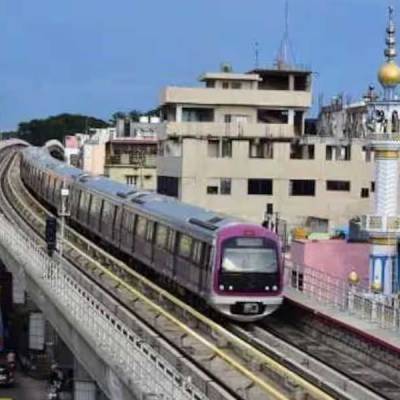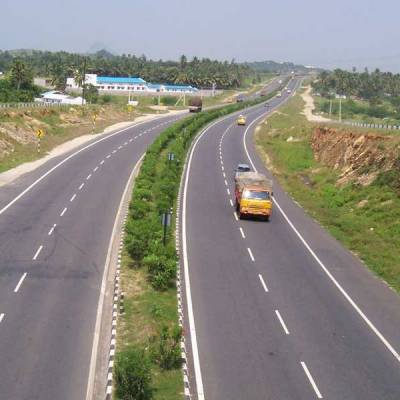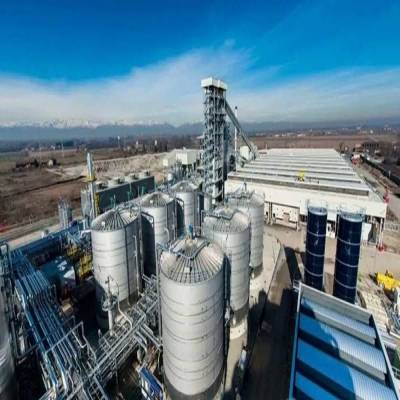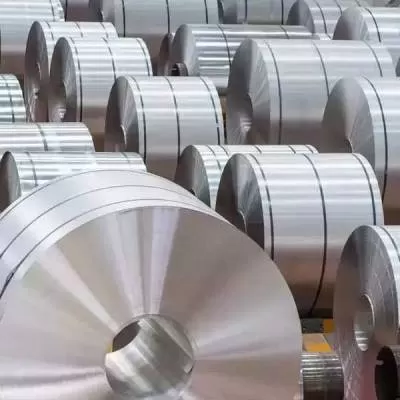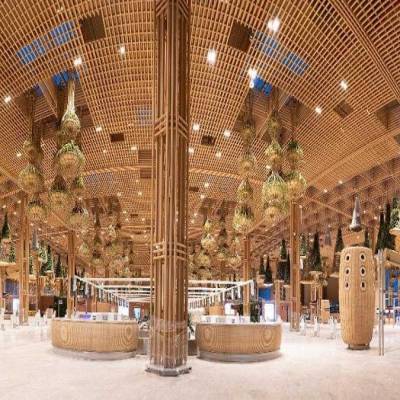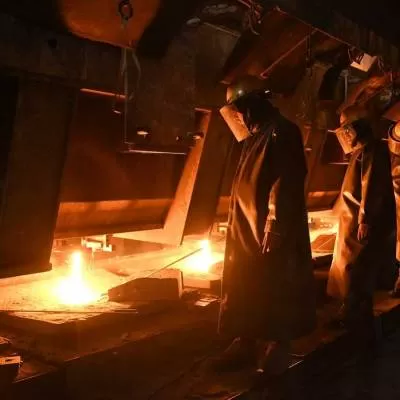- Home
- Building Material
- Steel
- Here's how bamboo can serve as a promising construction material in earthquake-prone areas!

Here's how bamboo can serve as a promising construction material in earthquake-prone areas!
In India and many bamboo-rich countries, bamboo continues to be used in traditional and rural areas as a cost-effective housing material. However, it does not enjoy the patronage of contemporary engineers unlike brick, steel, concrete or timber. Possible reasons for this could be the low durability of bamboo and lack of technical know-how or facilities for preservative treatment, authentic design data on various species and information on design and reliability of jointing techniques and detailing. <br /> <br /> That said, varied applications in construction have established bamboo as a structurally-efficient, energy-efficient and cost-effective material. In India, 125 indigenous and 11 exotic species of bamboo belonging to 23 genera have been reported. Of 78.29 million hectare of forest area, its bamboo-bearing area is estimated to be 13.96 million hectare (17.83 per cent). Arunachal Pradesh has the maximum (1.6 million hectare) followed by Madhya Pradesh (1.3 million hectare), Maharashtra (1.1 million hectare) and Odisha (1.05 million hectare). <br /> <br /> <span style="font-weight: bold;">Grading</span><br /> One major reason for not including bamboo in construction projects is owing to the difficulty in procuring the right quality (grade) and species required in large quantities as demanded by housing projects as well as the material not being included in specifications approved by government agencies, which causes many engineers to hesitate. <br /> <br /> The commercial grading of bamboos was attempted, irrespective of species with classification, based purely on dimension and general appearance, qualitative evaluation of defects and fixing permissible defects based on volume or area of the material in each grade as per the National Building Code of India (NBCI, 2005).<br /> As for preservation, it is an important aspect of bamboo building technology and a standard on the preservative treatment of bamboo (IS 9096:1979) is already in existence in India for long. <br /> <br /> <span style="font-weight: bold;">For earthquake-prone areas</span><br /> Bamboo possesses excellent strength properties, especially tensile strength, and is much more flexible than hardwood and concrete materials. Thus, it is necessary to develop technological packages that can be easily adopted for mass housing in such areas. <br /> <br /> In fact, bamboo-based housing systems are prevalent as a vernacular type of construction in many parts of the world where the material is available locally. Even in India, bamboo-based houses are not so uncommon, especially in the NorthEast, which is seismically the most vulnerable zone. In many buildings, bamboo has even been used extensively as a structural component. Even in tropical India, wall panels made of bamboo grids are quite common. <br /> <br /> In the North-East, bamboo-based housing systems are known to perform better than conventional economically equivalent structures like masonry, but general perception of its benefits appear to be lacking because of lack of awareness of utilisation of available species with even marginal treatments and lack of published data on the seismic evaluation of bamboo buildings and quantification of the structural performance of bamboo components. <br /> <br /> While the former is currently being addressed through many organisations such as FRI, Dehradun; IPIRTI, Bengaluru; IWST Bengaluru; and KFRI, Kerala; there appears to be little attempt to address the latter.<br /> <br /> Structural evaluation, chiefly seismic evaluation, requires a lot of infrastructure. And prohibitively expensive infrastructure cannot be used to evaluate housing systems that are extremely low-cost in nature themselves! One needs to evaluate the components of a bamboo-based housing system in addition to full-scale models under seismic loads by using simple and cost-effective facilities. It is against this backdrop that the present research finds its focus. <br /> <br /> <span style="font-weight: bold;">Seismic performance</span><br /> The IPIRTI-TRADA housing system has proven to withstand a simulated earthquake test carried out using the shaking table test facility at Central Power Research Institute (CPRI), Bengaluru, under the TRADA project.<br /> <br /> A typical Assam house has a wooden frame with infill plastered bamboo lath and has been found effective in resisting earthquakes. A demonstration house (Plate 1) was constructed in Mizoram using Latin American earthquake-resistant bamboo housing technology. The bamboo house of 2.7 m + 2.7 m, with a mass of 2,636 kg, was tested on the shaking table (Plate 2). A seismic simulation of 30 seconds was carried out on the house for a design spectrum of Zone-IV and Zone-V classification as per IS-1893, 2002. To test the fatigue strength of the house, zone V design spectrum was repeated for five times. Even the Kobe earthquake data was simulated for the same house. After the test programme, the structure did not exhibit any cracks or damage in any part. As the testing programme needed a sophisticated facility, costs constrained the testing of more models.<br /> <br /> To extend the studies on similar and alternative model houses, one needed a simpler version of the shaking table, such as a shock table, where it is possible to study the progressive failure of the structure in a methodical manner.<br /> <br /> <span style="font-weight: bold;">Using shock table studies</span><br /> A seismic evaluation of a full-scale bamboo housing system was carried out on two models using a shock table test facility. The facility has been specially designed to house these models and evaluate them for lateral dynamic loads. The design ensures that the influence of the dynamics of the shock table does not impinge on the seismic performance of the models. This was achieved by fabricating the shock table to be extremely rigid in its own plane. Its dynamics were characterised by a free-vibration test and validated using finite element analysis. Later studies were conducted to identify a suitable material at the point of impact of the pendulum with the shock table to effectively transfer the energy imparted to the models. Later, the models were constructed on the shock table and evaluated (Plate 3). The cumulative energy imparted was severe enough to cause damages far more extensive than those reported from various earthquakes. Thus, as opposed to the shaking table test in the TRADA programme, the shock table tests were performed up until the model seemingly lost its serviceability criteria. This helped identify the extreme limits of seismic vulnerability of the bamboo-based housing system.<br /> <br /> From this extensive study, it was observed that the model did not collapse nor show any signs of collapse. Also, there were no indications of any tendency of a local collapse of the roofing elements. Thus, one concludes that the model satisfied the requirement of resisting major levels of lateral dynamic forces without losing its stability. <br /> <br /> <span style="font-weight: bold;">Future prospects</span><br /> India, particularly the NorthEast, is witnessing a paradigm shift in housing construction technology wherein, a traditional material such as bamboo is increasingly being replaced with concrete - an inappropriate choice for seismically active zones. One hopes the results from this work provide the engineering impetus to rekindle the art of constructing seismically strong houses using bamboo as a basic material.<br /> <br /> <span style="font-weight: bold;">The Bamboo Bonus!</span><br /> Bamboo can serve as a promising construction material in earthquake-prone areas, says <span style="font-weight: bold;">Dr Jagadish Vengala, Associate Professor & HoD, BMSIT&M.</span><br /> In India and many bamboo-rich countries, bamboo continues to be used in traditional and rural areas as a cost-effective housing material. However, it does not enjoy the patronage of contemporary engineers unlike brick, steel, concrete or timber. Possible reasons for this could be the low durability of bamboo and lack of technical know-how or facilities for preservative treatment, authentic design data on various species and information on design and reliability of jointing techniques and detailing. <br /> <br /> That said, varied applications in construction have established bamboo as a structurally efficient, energy-efficient and cost-effective material. In India, 125 indigenous and 11 exotic species of bamboo belonging to 23 genera have been reported; the country is reported to be the second richest after China in terms of bamboo genetic resources (FSI report, 2011). Of 78.29 million hectare of forest area, the bamboo-bearing area of the country is estimated to be 13.96 million hectare (17.83 per cent). Arunachal Pradesh has the maximum (1.6 million hectare) followed by Madhya Pradesh (1.3 million hectare), Maharashtra (1.1 million hectare) and Odisha (1.05 million hectare). <br /> <br /> <span style="font-weight: bold;">Grading </span><br /> The natural durability of bamboo varies according to species and type of treatment. One major reason for not including bamboo in construction projects is owing to the difficulty in procuring the right quality (grade) and species required in large quantities as demanded by housing projects as well as the material not being included in specifications approved by government agencies, which causes many engineers to hesitate. Further, like most vernacular techniques, the skill sets needed to sustain the traditional use of bamboo are depleting rapidly.<br /> <br /> The commercial grading of bamboos was attempted irrespective of species with classification based purely on dimension and general appearance, qualitative evaluation of defects and fixing permissible defects based on volume/area of the material in each grade as per the National Building Code of India (NBCI, 2005).<br /> <br /> <span style="font-weight: bold;">Preservation </span><br /> Preservation is an important aspect of bamboo building technology and a standard on the preservative treatment of bamboo (IS 9096:1979) is already in existence in India for long. However, it is not widely practiced. Most rural homes use untreated bamboo owing to both lack of facilities and chemicals required for treatment as well as awareness of its advantages. Undoubtedly, the success of bamboo building technology depends upon the availability of simple manuals on preservative treatment to create awareness among users and specifiers.<br /> <br /> <span style="font-weight: bold;">Bamboo housing in earthquake-prone areas</span><br /> With large seismic zones in India, bamboo can play a vital role in housing owing to its suitability and availability. It possesses excellent strength properties, especially tensile strength, and is much more flexible than hardwood and concrete materials. Thus, it is necessary to develop technological packages that can be easily adopted for mass housing in such areas. <br /> <br /> In fact, bamboo-based housing systems are prevalent as a vernacular type of construction in many parts of the world where the material is available locally. Even in India, bamboo-based houses are not so uncommon, especially in the Northeast, which is seismically the most vulnerable zone. In many buildings, bamboo has even been used extensively as a structural component. Even in tropical India, wall panels made of bamboo grids are quite common. <br /> <br /> In the Northeast, bamboo-based housing systems are known to perform better than conventional economically equivalent structures like masonry, but general perception of its benefits appear to be lacking because of lack of awareness of utilisation of available species with even marginal treatments and lack of published data on the seismic evaluation of bamboo buildings and quantification of the structural performance of bamboo components. <br /> <br /> While the former is currently being addressed through many organisations such as FRI, Dehradun; IPIRTI, Bengaluru; IWST Bengaluru; and KFRI, Kerala, there appears to be little attempt to address the latter.<br /> <br /> Structural evaluation, chiefly seismic evaluation, requires a lot of infrastructure. And prohibitively expensive infrastructure cannot be used to evaluate housing systems that are extremely low-cost in nature themselves! One needs to evaluate the components of a bamboo-based housing system in addition to full-scale models under seismic loads by using simple and cost-effective facilities. It is against this backdrop that the present research finds its focus. <br /> Seismic performance of bamboo housing<br /> <br /> The IPIRTI-TRADA housing system has proven to withstand a simulated earthquake test carried out using the shaking table test facility at Central Power Research Institute (CPRI), Bengaluru, under the TRADA project.<br /> <br /> A typical Assam house (Figure 1) has a wooden frame with infill plastered bamboo lath and has been found effective in resisting earthquakes. A demonstration house (Plate 1) was constructed in Mizoram using Latin American earthquake-resistant bamboo housing technology. The bamboo house of 2.7 m × 2.7 m, with a mass of 2,636 kg, was tested on the shaking table (Plate 2). A seismic simulation of 30 seconds was carried out on the house for a design spectrum of zone IV and zone V classification as per IS-1893, 2002. To test the fatigue strength of the house, zone V design spectrum was repeated for five times. Even the Kobe earthquake data was simulated for the same house. After the test programme, the structure did not exhibit any cracks or damage in any part. As the testing programme needed a sophisticated facility, costs constrained the testing of more models.<br /> <br /> To extend the studies on similar and alternative model houses, one needed a simpler version of the shaking table, such as a shock table where it is possible to study the progressive failure of the structure in a methodical manner. A shock table is a simple version of the shake table, which is a horizontal table over which the building model can be built and subjected to controlled base shock. Shock table tests carried out at IIT (Roorkee), IISc (Bengaluru), Nirma University (Ahmedabad) and BMSCE (Bengaluru) have shown ample examples wherein the failure modes of building models are reproduced almost exactly as those observed during earthquakes. It is also possible to study progressive failure patterns, which greatly help to identify critical seismic detailing aspects. <br /> <br /> Seismic evaluation of bamboo housing system using shock table studies<br /> A seismic evaluation of a full-scale bamboo housing system was carried out on two models using a shock table test facility. The facility has been specially designed to house these models and evaluate them for lateral dynamic loads. The design ensures that the influence of the dynamics of the shock table does not impinge on the seismic performance of the models. This was achieved by fabricating the shock table to be extremely rigid in its own plane. Its dynamics were characterised by a free-vibration test and validated using finite element analysis. Later studies were conducted to identify a suitable material at the point of impact of the pendulum with the shock table to effectively transfer the energy imparted to the models. Later, the models were constructed on the shock table and evaluated (Plate 3). The cumulative energy imparted was severe enough to cause damages far more extensive than those reported from various earthquakes. Thus, as opposed to the shaking table test in the TRADA programme, the shock table tests were performed up until the model seemingly lost its serviceability criteria. This helped identify the extreme limits of seismic vulnerability of the bamboo-based housing system.<br /> <br /> From this extensive study, it was observed that the model did not collapse nor show any signs of collapse. Also, there were no indications of any tendency of a local collapse of the roofing elements. Thus, one concludes that the model satisfied the requirement of resisting major levels of lateral dynamic forces without losing its stability. <br /> <br /> <span style="font-weight: bold;">Future prospects</span><br /> India, particularly the Northeast, is witnessing a paradigm shift in housing construction technology wherein a traditional material such as bamboo is increasingly being replaced with concrete—an inappropriate choice for seismically active zones. This is partly owing to urbanisation and, perhaps, the quest to emulate the contemporary urban lifestyle. One hopes the results from this work provide the engineering impetus to rekindle the art of constructing beautiful and seismically strong houses using bamboo as a basic material, particularly in places where bamboo is plentiful. <br /> <br /> <span style="font-weight: bold;">About the author: Jagadish Vengala is Head, Department of Civil Engineering, BMSIT&M, Bengaluru and chief coordinator, Innovation Centre.</span> After two years as a design engineer at Torsteel Research Foundation, he joined IPIRTI (under Ministry of Environment & Forests, Government of India) as a scientist in August 2004 and worked for 11 years for IPIRTI, Bengaluru. <br /> <br /> Share an innovative material at feedback@ConstructionWorld.in<br />


